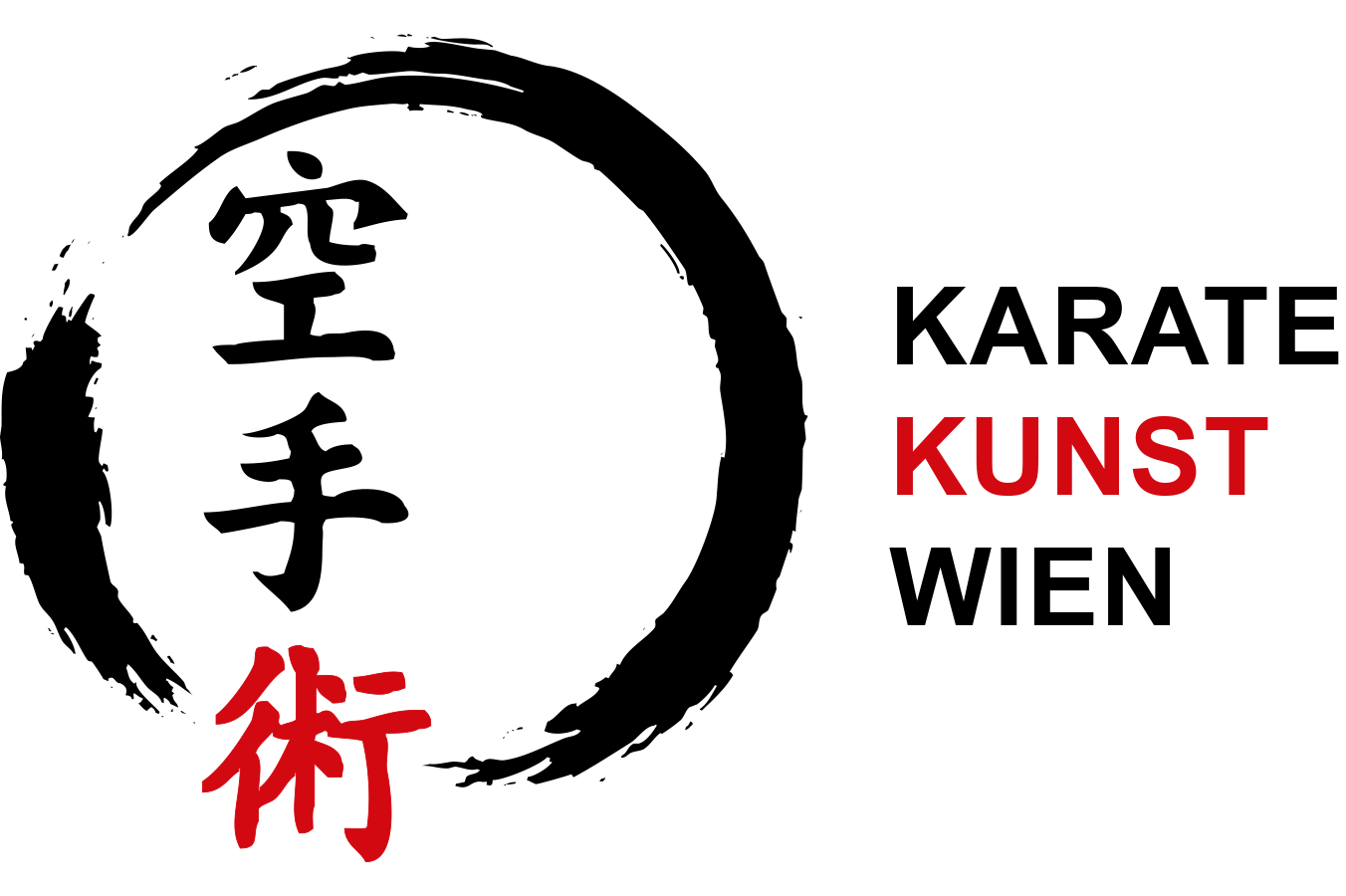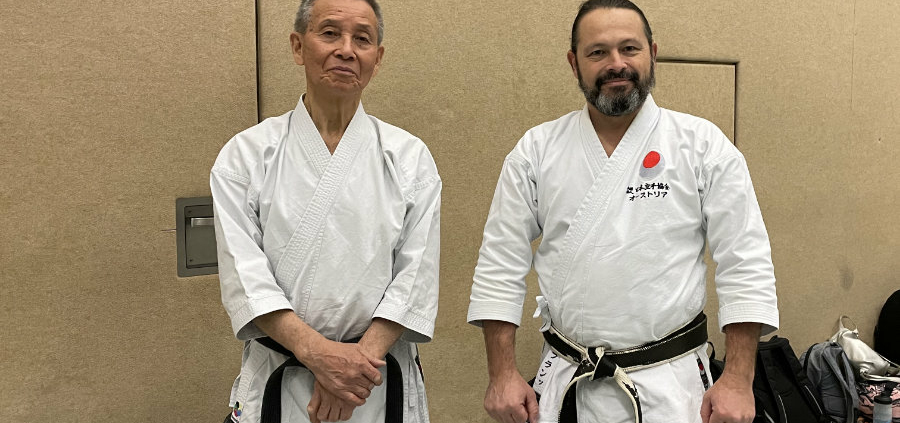Karate Flow Part 3 – The Way to the Karate Flow – keep calm and grow!
How the slow-flowing development process shapes the karateka internally and externally
What effect has the karate flow for the karateka?
Martial arts have been proven to have positive effects on body and mind, regardless of the style practiced. Most of the physical benefits are obvious, such as strength, endurance or flexibility, but there are also less visible aspects, which are even more worthwhile in the long term – such as a generally better body awareness through the karate flow and, associated with it, a better body feeling.
The spiritual aspects are also diverse: for young people without a foothold in society, the community of a gym or dojo can give a sense of belonging and a spiritual home. A martial artist learns to reduce his aggression and to transform it into a positive Budo spirit. With the right guidance, fairness and respect are not just slogans, but rather become a way of life. Dealing with yourself and others trains concentration and attention (zanshin). Through self-reflection you learn to analyze your mistakes and continue to improve. If at the beginning of the path of martial arts a victory still seems important, over time this will fade into the background and a serene composure and calm will allow the warrior to become a wise master.
This is the path if it is taken holistically and consciously: “It is not victory or defeat that is important, but the perfection of the character” (Gichin Funakoshi).
But unfortunately we all know negative examples of black belts for whom, despite years of training, respect, fairness and willingness to help are foreign words.
Simply practicing a sport does not guarantee spiritual development because many people have their own ego standing in the way, which prevents spiritual maturation apart from technique and speed.
What makes the fighter a master?
I believe that consciously dealing with one’s own and others‘ aggression makes a karateka more sensitive and empathetic. If you have fought a lot of fights, but the matter itself was always more important than the success, the second and more important career in karate begins.
A master stands above things and can break away from the youthful drive of his ego. My first, longest and probably most important karate teacher was an excellent karateka, but unfortunately he was plagued throughout his life by the contradictions of his ego: on the one hand, he felt like a samurai or budoka due to his long karate stays in Japan, but on the other hand, he always wanted his successes to be recognized with fame and money.
And after his own sporting career, he has defined his karate through the success of his students and the financial gain of the dojo. The training was correspondingly demanding and the treatment between talented and untalented students was correspondingly unequal.
In transforming from fighter to master, the first step is letting go of one’s past and the second step is letting go of one’s ego; Karate flow in the form of physical and psychological reappraisal. This process also plays a major role in ZEN, which is why karate or especially the execution of kata is also referred to as “Moving Zen” (highly recommend the book of the same name by C.W.Nicol!).
Beautiful examples of meditative, flowing kata in the sense of Karate Flow or Moving Zen include Hangetsu, Sochin and Nijushiho, which are often practiced by older karate masters.
The longer and more intensively you work with these kata, the more you realize that the flowing techniques are not only gentle on the body, but can also be used successfully in partner training if used correctly. But that’s no longer what it’s about, it´s rather about being absorbed in doing, in the now, in being!
When a kata has been consolidated to the point where you no longer have to think about the individual techniques or correct breathing, you can enjoy the detachment in the kata flow and be completely absorbed in it.
This detachment will then increasingly not just be a state in training, but the karate flow will become part of life and fill the karateka with balance and natural relaxation in every situation.
And this relaxedness also indirectly leads to avoiding conflict situations. It’s good to be able to defend yourself in an emergency, but even better if it doesn’t happen in the first place. A good karate master radiates an inner calm that can neutralize or at least weaken external aggression. It is by no means a mark of a master if he seeks conflict himself or just wants to prove himself from fight to fight!
What makes the master a good teacher?
Not every karateka who is a good fighter or does a great kata is also a good teacher. The actual karate path usually begins after the competitive career, when training aimed at winning is no longer so important. At a young age, testing and comparing your own abilities is important for personal development.
But with age, priorities should change – karateka who have not discovered the karate flow for themselves often stop training or only pass on the experience they have gained up to that point without continuing to work on themselves.
Kata legend (7-time All Japan JKA Kata Champion!) Osaka Yoshiharu is an exemplary role model of intensive engagement with all aspects of karate and the associated continuous development.
As a master student of Nakayama sensei and through intensive own training, Osaka sensei has acquired enormous karate knowledge, which is why he is often called “The living textbook of karate”. Most sensei can logically demonstrate techniques perfectly, but few can also explain them well – with Osaka sensei, demonstrating at the highest technical level and explaining go hand in hand, understandably and comprehensibly. That’s why he is very valued as a karate teacher even outside the JKA (e.g. Andre Bertel always gets inspiration from training with Osaka sensei).
Successful in both Kata and Kumite, he now radiates the aura of a calm warrior monk in his old age. “His” Sochin flows with a supple yet exciting grace, without ever seeming forced or staged.
Another master of the flowing martial arts is the karate genius Tetsuhiko Asai, whom I unfortunately never got to meet, but I did meet one of his master students, Andrè Bertel.
During a karate seminar, Andre often mentioned what an exemplary teacher Asai sensei was – demanding, but always friendly and helpful and responsive to every student!
At this seminar, Andre introduced us to Kata Suishu („Water Hands“), which the name says it all – Master Asai developed this kata specifically to express the fluid change in speed, strength and direction of attack, inherent in water.
Andre wrote about his role models in general in one of his karate blogs:
“Asai sensei is NIJUSHIHO, Yahara sensei is UNSU and Osaka sensei is SOCHIN. These karate masters make the current generation red faced. No one can move at their level. This is the source of so much politics… Jealousy.
No one wants to stand alongside Osaka Sensei in kata practice, as we all look stupid. In my case, I want to look stupid, and hopefully get just a little closer to near perfection.”
In Austria we have our own karate legend, Goju-ryu Grandmaster Ogawa Takeji. In the many decades of coaching activity, including as a national coach in Austria, but also in neighboring countries, Ogawa sensei has passed on his unique knowledge of karate-do and, even at the age of over 80, still works on his own improvement every day.
Every training session with Ogawa is an incredible experience in terms of body tension and elasticity, for example with his “springy” tsuki. Sensei is always modest and says that he only provides tips and instructions, but that everyone has to do the actual work for themselves in personal training.
The style name Goju-ryu succinctly describes the philosophy behind this form of karate: “hō gōjū donto” – “Everything in the universe breathes hard and soft”.
Although I have been practicing Shotokan karate for over 30 years, the Goju-ryu attitude of hard/soft has always fascinated me. For many years, Ogawa sensei was a guest trainer for the summer gasshuku in the club where I spent my first 20 years of karate.
And even now I occasionally drive from Vienna to Steyr for Ogawa training in order to refresh the many memories and impressions of his special movement patterns.
I kept making key word notes about his views on karate. The core message of Ogawa sensei’s karate attitude:
“Very important: Do karate every day and try to improve your technique even as you get older!”
Oss, sensei! 🙇🏻





